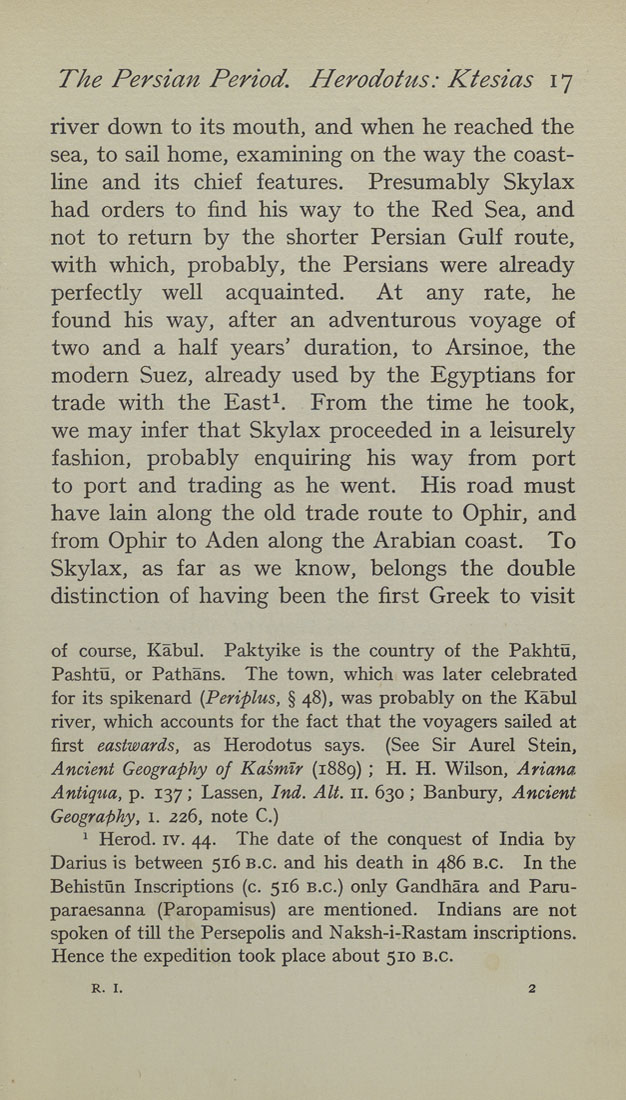The Persian Period. Herodotus: Ktesias i*]
river down to its mouth, and when he reached the
sea, to sail home, examining on the way the coast¬
line and its chief features. Presumably Skylax
had orders to find his way to the Red Sea, and
not to return by the shorter Persian Gulf route,
with which, probably, the Persians were already
perfectly well acquainted. At any rate, he
found his way, after an adventurous voyage of
two and a half years' duration, to Arsinoe, the
modern Suez, already used by the Egyptians for
trade with the East^. From the time he took,
we may infer that Skylax proceeded in a leisurely
fashion, probably enquiring his way from port
to port and trading as he went. His road must
have lain along the old trade route to Ophir, and
from Ophir to Aden along the Arabian coast. To
Skylax, as far as we know, belongs the double
distinction of having been the first Greek to visit
of course, Kabul. Paktyike is the country of the Pakhtu,
Pashtu, or Pathans. The town, which was later celebrated
for its spikenard {Periplus, § 48), was probably on the Kabul
river, which accounts for the fact that the voyagers sailed at
first eastwards, as Herodotus says. (See Sir Aurel Stein,
Ancient Geography of Kasmtr (1889) ' H- H- Wilson, Ariana.
Antiqua, p. 137; Lassen, Ind. Alt. 11. 630; Banbury, Ancient
Geography, 1. 226, note C.)
^ Herod, iv, 44, The date of the conquest of India by
Darius is between 516 b.c, and his death in 486 b.c. In the
Behistiin Inscriptions (c, 516 b,c.) only Gandhara and Paru-
paraesanna (Paropamisus) are mentioned. Indians are not
spoken of till the Persepolis and Naksh-i-Rastam inscriptions.
Hence the expedition took place about 510 B.C.
R. I. 2
|








